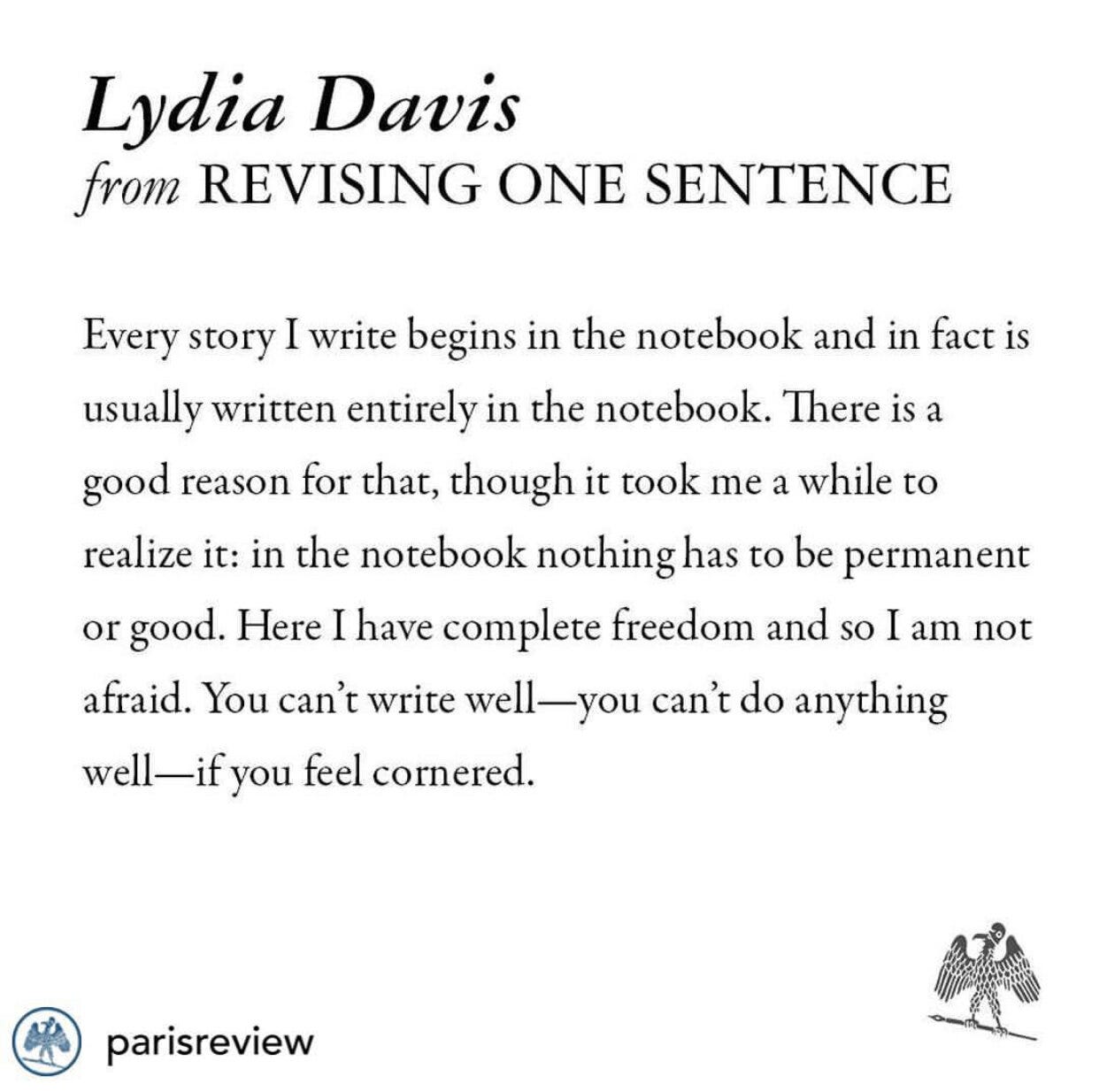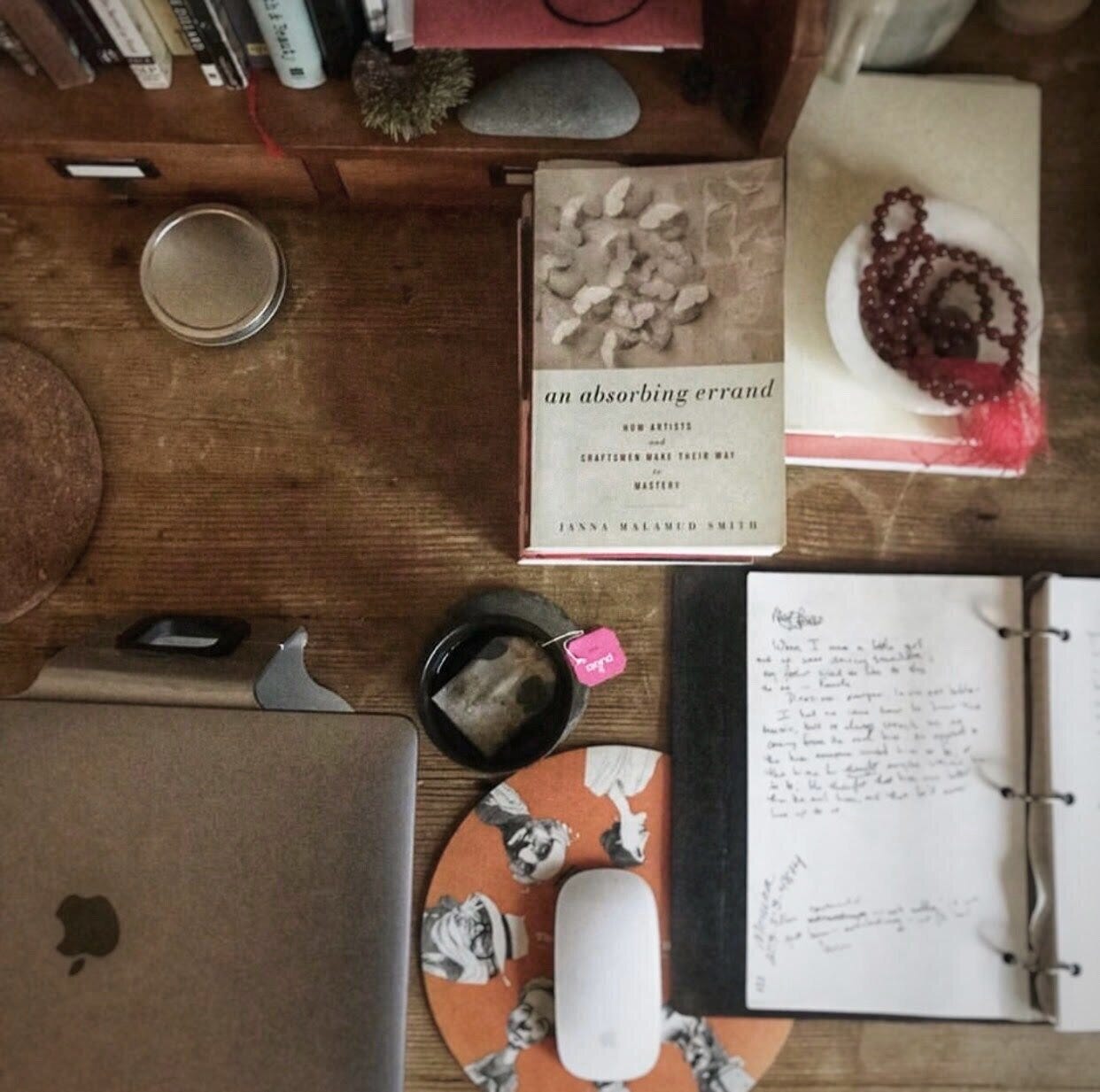Claire Messud writes by hand on graph paper.
Dani Shapiro once told me that she begins new work longhand because early drafts should not look like finished, polished manuscripts. And Lydia Davis writes every story in a notebook because there, nothing has to be “permanent or good.”
And yes: “You can’t write well — you can’t do anything well — if you feel cornered.”
True.
I was a stutterer as a child, a survivor of well-intentioned perfectionism. I struggled to get the words just right; it was expected in my home, and if I couldn’t unravel what I was trying to say on the watches of the people around me, I was often interrupted and the conversation was over. (Oddly, I still tend to attract chronic interrupters in my life, some kind-hearted, some not.) I took early to the practice of keeping a notebook because it was the place where I was able to complete a thought in whatever circuitous route I needed and had to. I also wrote stories and created lists and made feeble attempts at horrendous metric poetry. Whatever I was doing in my notebook was my own business: I used it to explain the world around me, and to make sense of it.
To make sense of myself.
Notebooks are the viscera and the DNA of art-making; they are proof of life and human frailty behind our dodgy attempts at perfection.
Keep reading with a 7-day free trial
Subscribe to Poor Man's Feast to keep reading this post and get 7 days of free access to the full post archives.




